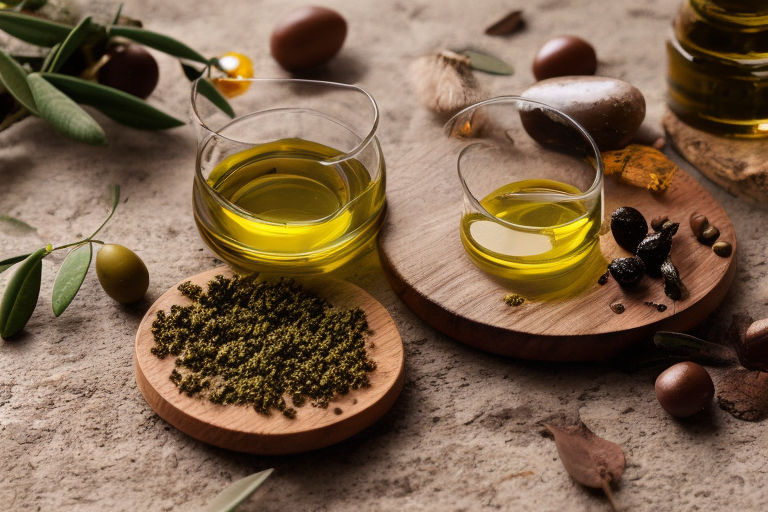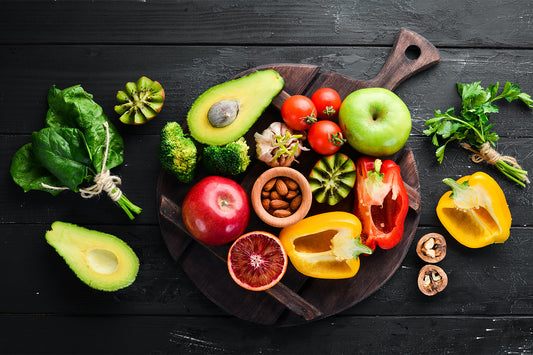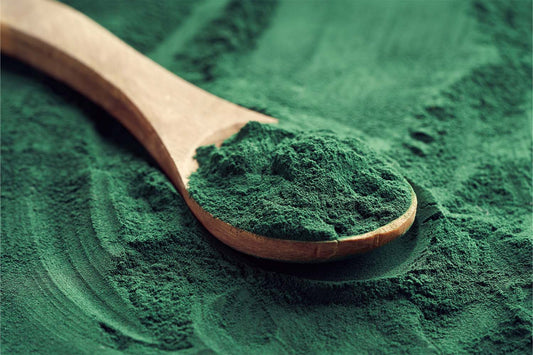There are many healthy fats we should consider incorporating into our diets – so many that it can be hard to keep track. Linoleic acid is just one of the multiple healthy fats you should include on a daily basis.
Knowing where to find linoleic acid-rich foods and how to incorporate them into a balanced diet can offer several potential health benefits.
What Is Linoleic Acid?

Linoleic acid is a type of omega-6 polyunsaturated fatty acid, and it is the most common form of omega-6 in a Western diet. Linoleic acid is found mostly in plant oils but can be found in some animal foods as well. The body can use linoleic acid as a source of energy or to form lipids in the body that support the healthy function of cells.
It’s important to point out that linoleic acid is different from linolenic acid, a type of omega-3 polyunsaturated fat. Linoleic acid is the most common polyunsaturated fatty acid in a regular diet.
Linoleic acid is slightly controversial, as it can benefit your health, but consuming too many omega-6 fats may have downsides. In moderation, though, they can be an excellent addition to your diet.
What Are the Benefits of Linoleic Acid?
Fats have gotten a bad reputation in the nutrition world for too long! Fats like linoleic acid can actually have multiple benefits for your health when eaten in moderation.
Some of the potential benefits of linoleic acid include:
- Supporting heart health
- Supporting cholesterol levels already within the healthy range
- Maintaining healthy insulin production in the body
- Supporting a healthy blood pressure
When you consume linoleic acid from the right sources and in combination with other healthy fats, you reduce the potential downsides and maximize the benefits. As a result, it is important to get linoleic acid from nutrient-rich foods.
What Are Some Dietary Sources of Linoleic Acid?
There is currently no recommended dietary intake of linoleic acid, but including omega-6 fatty acids in your diet can be a good idea, especially when you get them from the right places. Here are some foods high in this essential fatty acid.
1. Walnuts
If you want a strong source of linoleic acid and also a convenient snack or addition to your baking recipe. Walnuts are also high in other healthy fats — specifically omega-3s. On top of their healthy fat content, walnuts also provide a solid source of protein and fiber, along with minerals like manganese, copper, and magnesium.
Walnuts can be mixed into oatmeal, thrown into a salad, or added to yogurt, making each of them more nutritious. You can even add walnuts to baked muffins or cakes to get a little nutrition with your indulgence. Or, of course, you could always snack on them by the handful.
2. Tofu
Even though tofu has a reputation as an unexciting food for vegetarians, it is an underrated addition to anyone’s diet. Tofu, made from soybeans, is full of nutrients like dietary linoleic acid.
It is also highly versatile and easy to make taste good, giving you many ways you can incorporate this superfood into your diet. Tofu works well in soups, can be pan-fried, and can make for a great meat substitute in many dishes.
3. Plant Oils
Many vegetable oils are known for being high in healthy fats, and omega-6 linoleic acid is just one of them.
The following plant and seed oils are high in omega-6 linoleic acid:
- Avocado oil
- Canola oil
- Corn oil
- Olive oil
- Safflower oil
- Soybean oil
- Sunflower oil
You can incorporate more of these plant oils into your diet in several ways. You can use a tablespoon or two of oil for a salad dressing, mix oils for sauces, or use the oil to add to baked goods.
4. Hemp Seeds
Hemp seeds are another food source with high linoleic acid content. They come from the Cannabis sativa plant, and are rich in both omega-6s and omega-3s. That is not all these nutrient-dense seeds have to offer, though — hemp seeds are also full of a ton of vitamins and minerals, like iron, calcium, and magnesium, as well as protein and fiber.
Hemp seeds are an excellent addition to smoothies, yogurt, and baked goods. You can also include them in your cereal or oatmeal.
5. Sunflower Seeds
Sunflower seeds are seeds that come from tall yellow sunflowers, and they feature a nutty flavor. These little seeds are but also provide nutrients like vitamin E, selenium, and zinc, which can support healthy cells.
To add even more benefits, sunflower seeds are also a great source of plant-based protein. With all the nutrition they have to offer, some even consider these seeds a superfood.
Sunflower seeds go great in trail mix, on top of salads, or even blended into an alternative for peanut butter. If you feel extra ambitious, you can use the seeds to make homemade granola bars.
6. Peanut Butter
Peanut butter may sound like an easy fallback snack when you’re running low on time, but it also provides a solid nutrient profile, giving you the best of both worlds. Peanut butter offers protein, iron, and magnesium alongside linoleic acid.
You can add peanut butter to your daily diet by making yourself peanut butter toast in the morning, adding peanut butter to smoothies, or being nostalgic with a classic peanut butter and jelly sandwich.
Just be careful not to get too excited with the peanut butter and overeat, as it is a sneaky source of extra calories and fats.
What Are the Drawbacks of Linoleic Acid?
Linoleic acid offers several benefits, but consuming too much of it can be more harmful than helpful. The number one drawback of linoleic acid is that it turns into arachidonic acid in the body.
Arachidonic acid is a pro-inflammatory compound in the body, so too much of it can cause a range of health problems, like an added risk for disease and higher body fat. Fortunately, many of the potential drawbacks of linoleic are balanced out by the benefits of omega-3 fatty acids.
The three main types of omega-3 fatty acids are:
- Alpha-linolenic acid (ALA), an omega-3 precursor
- Docosahexaenoic acid (DHA)
- Eicosapentaenoic acid (EPA)
Consuming omega-3s regularly offers many potential benefits, from supporting your heart health to maintaining the health of your joints. All three sources of omega-3 fatty acids can help to support your health, but DHA and EPA are the two most beneficial forms of healthy fats. The effects of omega-3 help to counteract the effects of arachidonic acid, making them a great addition to your daily diet.
There is no daily recommended amount of linoleic acid you should consume or avoid to support your overall health and wellness, but research says that about five to 10 percent of your daily energy intake should come from linoleic acid. However, it is a good idea to include a balance of both omega-3 and omega-6 fatty acids in your diet.
Where Can You Find Omega-3s?
To support a healthy balance of omega-6 and omega-3 fatty acids, you need to know what foods you should include in your diet to get both. Some of the foods mentioned above offer both linoleic acid and ALA omega-3. In fact, ALA is the easiest omega-3 to come by in a standard diet, as you can consume them through many plant foods, like vegetable oils, walnuts, and chia seeds.
Although ALA is helpful to include in any diet, you don’t need to think much about it since it is included in many daily foods. DHA and EPA omega-3s are harder to come by in everyday foods compared to both ALA and linoleic acid. These two omega-3s also offer superior potential health benefits, making them an important addition to your diet.
These two essential fats are only found in marine sources, so you need to be extra mindful of how you will include them in your diet. The most common source of omega-3s is fatty, oily fish like mackerel, salmon, sardines, and tuna. You can opt for fish oil supplement if eating fish isn't enticing. Still, fish oil supplements may not be an option if you have an allergy, dislike fish, or want to avoid those dreaded fishy burps.
Algae is another powerful source of DHA and EPA omega-3s. Not only is it a great source of omega-3, but it provides the benefits of these two essential nutrients without the drawbacks. For example, algae supplements are an excellent option for anyone on a plant-based diet or with a seafood allergy. A perfect example is an iwi life omega-3 supplement.
Above all else, the omega-3s in iwi life’s Nannochloropsis algae are absorbed 1.7 times better by the body than those from fish or krill oil. This means you get more bang for your buck every time you take an algae supplement — all without the fishy breath.
Get All the Fatty Acids You Need
Dietary linoleic acid is a valuable part of a standard diet, but it is important to consume it in moderation. On top of watching your linoleic acid intake, it helps to consume omega-3s that can balance out the levels of linoleic acid you consume. Fortunately, getting omega-3s in your diet is easier than you think.
When you rely on iwi life, you can trust that you are getting the daily amounts of DHA and EPA omega-3s that you need, all in one daily softgel. Explore our complete family of algae-based omega-3 supplements to start boosting your nutrition.
Sources:



















